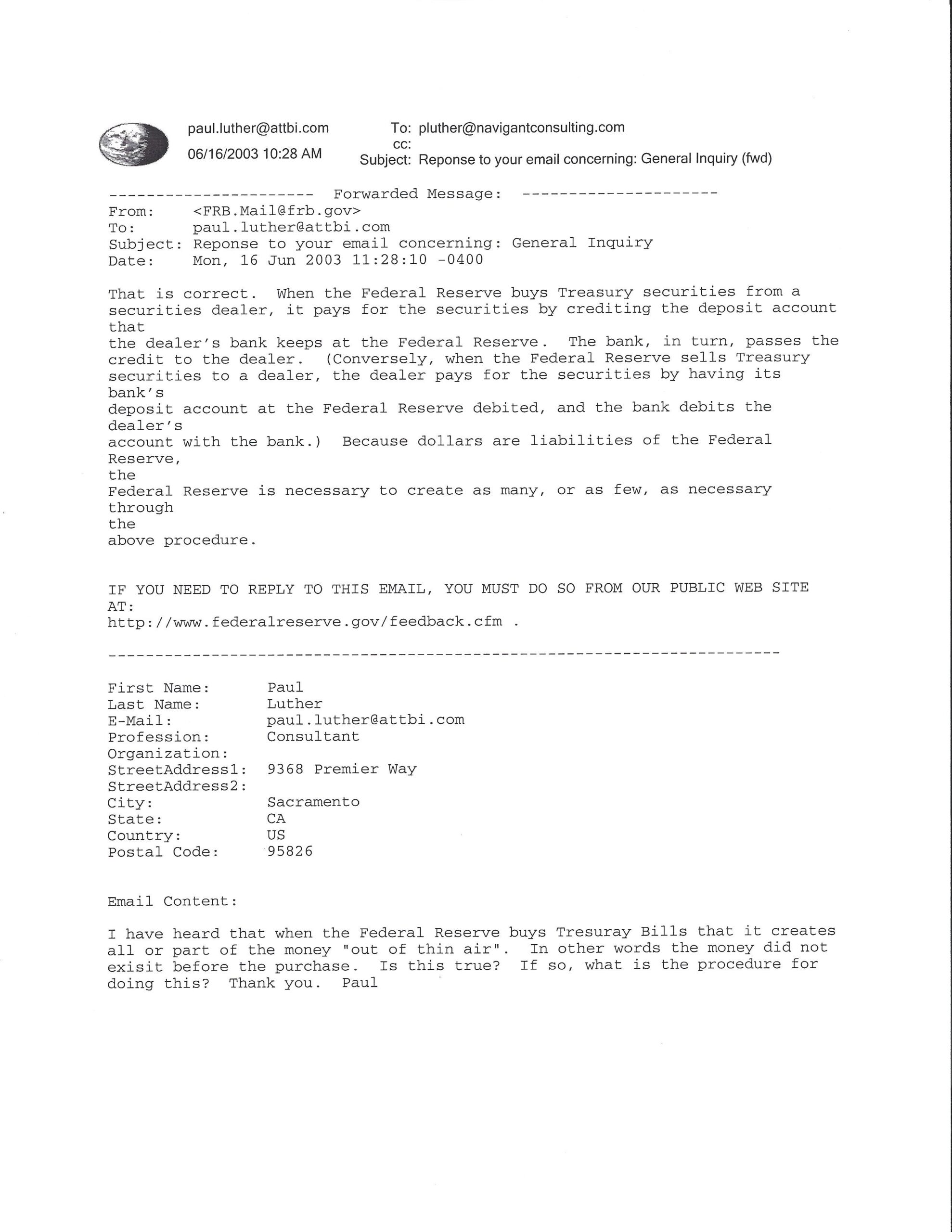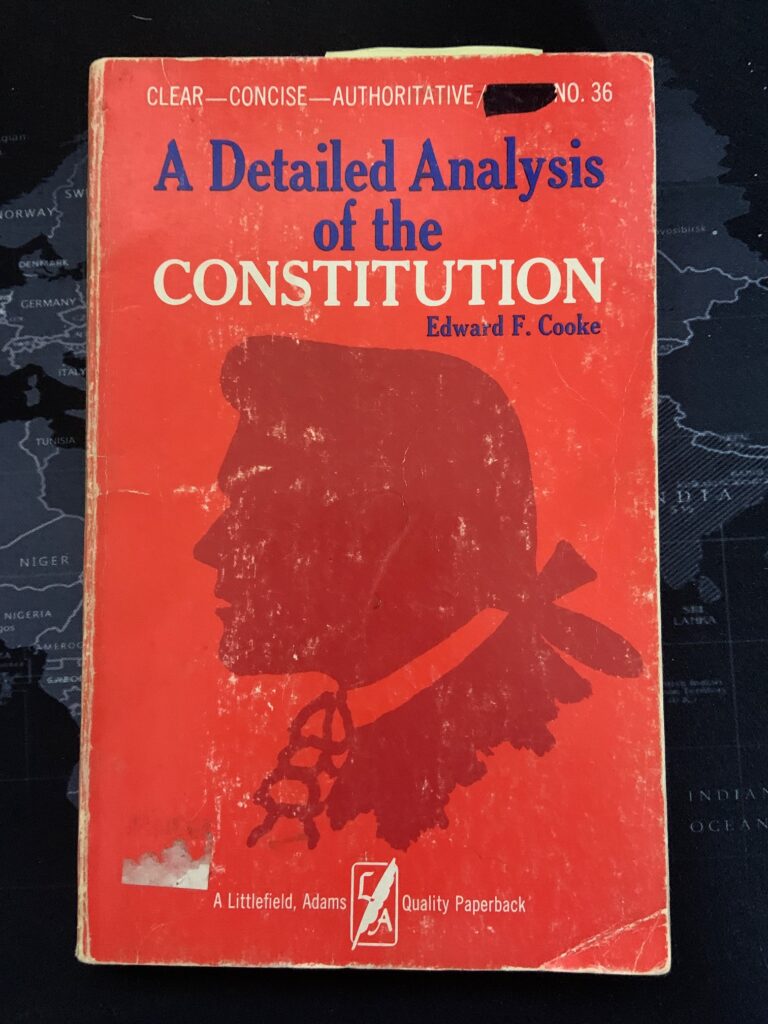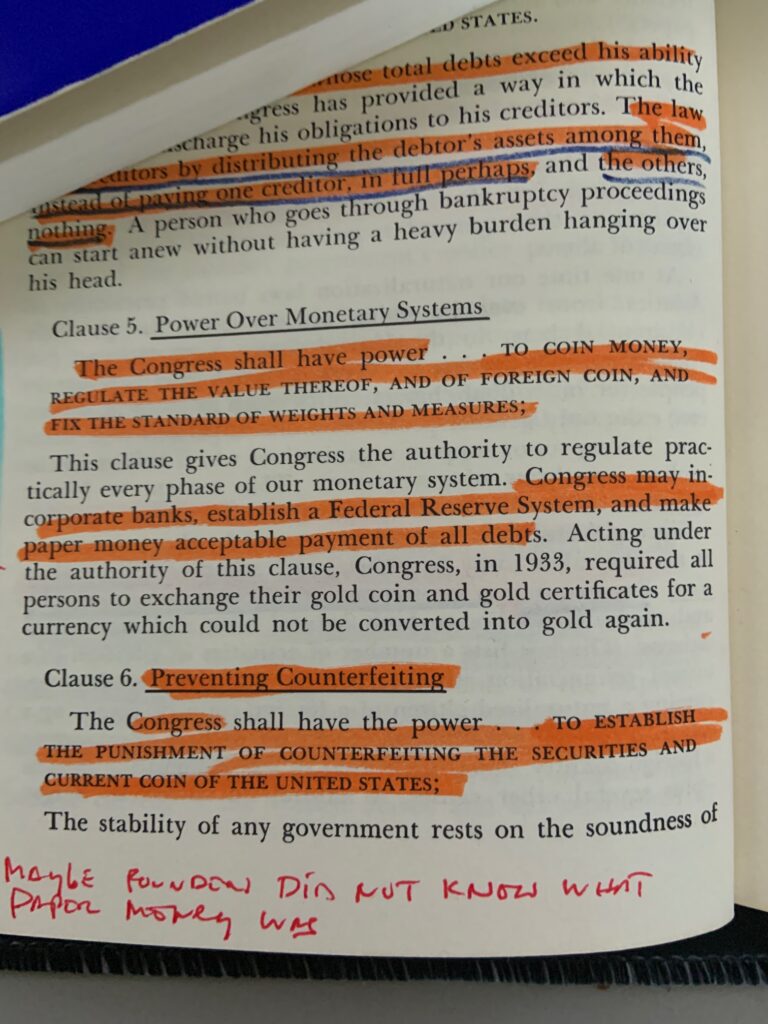Paragraph 17
17) And to aid in the communication and cooperation between individuals, and it follows commerce between the People of all nations and within the union and thus help prevent the use of force, fraud, and the mischiefs of mankind; the general government is to fix a standard of:
• First) length,
• Next) capacity or volume, and
• Finally) to fix or define the unit of the commodity to be used as money, which is a generally accepted common indirect medium of exchange between people,
Why go to all the trouble of spelling out something so simple as to first, length then capacity or volume, then talk about coin. The point being this is what was intended when the Founder’s wrote the Constitution:
”To coin money, regulate the value thereof, and of foreign coin, and fix the standard of weights and measures. ‘” (Article I, section 8, clause 5.)
They were establishing standards for the new Republic. They were also setting the type of monetary system that would be used and by saying “coin money”, establishing a mint. That’s it. No Central Bank, No Paper money. Let me provide a little more relevant information about how this simple phrase came to be turned into law. It actually is a good example of the “elastic clause” as intended. Unfortunately, the elastic clause has been abused, but that’s for another time.
Please take a look at the below timeline of events. Shortly after the ratification of the U.S. Constitution Congress asked the Secretary of State, who happened to be Thomas Jefferson, to make recommendations for standards of weights, measures, and of coin. I have provided a highlighted copy following the timeline for your inspection.


Below I provide a highlighted copy of Thomas Jefferson’s Plan for Establishing Uniformity in the Coinage, Weights, and Measures of the United States. What is interesting about this is that before one can arrive at a standard for a coin one must first have established the standard for length, volume and capacity. Thomas Jefferson provides details about the establishing these standards. I believe you will find this to be interesting reading. I found it interesting that our standard length was based on the swing of a pendulum through a standard unit of time – the second. A standard that any person on earth could use.
Now that the standards are understood the next step is codifying into law. This is what the last power mentioned in Article I Section 8 means, namely,
“To make all Laws which shall be necessary and proper for carrying into
Execution the foregoing Powers, and all other Powers vested by this
Constitution in the Government of the United States, or in any
Department or Officer thereof.”
What follows below is a copy of the mint act of 1792. Please note that the punishment for debasing the coin was penalty of death. I wonder what the founders would think of our paper money system where our unit of money is being debased every day through inflation. For those who don’t know, price increases are a symptom of inflation. Some will say that is inflation. The cause is printing too much money, which devalues every existing dollar. In a sense reducing the value of your money or property and is a clear violation of the 5th Amendment, which states,
“No person shall be held to answer for a capital, or otherwise infamous
crime, unless on a presentment or indictment of a Grand Jury, except in
cases arising in the land or naval forces, or in the Militia, when in
actual service in time of War or public danger; nor shall any person be
subject for the same offence to be twice put in jeopardy of life or
limb; nor shall be compelled in any criminal case to be a witness
against himself, nor be deprived of life, liberty, or property, without
due process of law; nor shall private property be taken for public use,
without just compensation.” (emphasis added.)
In this day and age we print money as well as make electronic entries on a balance sheet, and it is our federal government working with the Federal Reserve that is doing it. (Note: When the Federal Reserve buys a government bond or treasury it prints the money “out of thin air”.)
Inflation is actually a hidden tax. Rather than raise taxes to pay for all the goodies we American expect, they run the printing press. The corresponding reduction of value of each dollar in your wallet is actually how the payment is made, without your direct consent. In a sense, taking your property. In may take years before this is actually felt through the economy, but it will happen. History is very clear on the subject. Take a look at Venezuela or Zimbabwe right now as excellent examples of what will happen here with our Trillion dollar deficits/debt.
Several years ago I wrote to the Federal Reserve and asked them if they could print money out of thin air and also the procedure for doing so. The response is below.

In the above I showed how a power enumerated in the Constitution established standards and how it led to the creation of the mint. A takeaway from this is that there is a very narrow window of what can be created based on the power stated in the constitution. It’s as simple as that.
To the right I show a book I found as I was doing research into the Constitution . The book was written by Edward F Cooke, Director Center for Politics Department of Political Science University of Pittsburgh (A Detailed Analysis of the Constitution, Littlefield, Adams & Company, 1965). I picked this up in a book store in West Lafayette Indiana, home of Purdue University.
The image below from that book has the statement,
“The Congress shall have power . . . to coin money, regulate the value thereof, and of foreign coin, and fix the standard of weights and measures. This clause gives Congress the authority to regulate practically every phase of our monetary system. Congress may incorporate banks, establish a Federal Reserve System, and make paper money acceptable payment of all debts. Acting under the authority of this clause, Congress, in 1933, required all persons to exchange their gold coin and gold certificates for a currency which could not be converted into gold”.
Wow, that one clause did all that! I bet the founders would be surprised at all the hidden powers they left in that one clause (sarcasm). This is how the smoke screen (conceal from view) is developed and how we dumb down our population. Unfortunately, what he wrote is essentially what we have today, so I guess I can’t be too hard on the professor.

To the right is an image showing an excerpt from the above book, A Detailed Analysis of the Constitution, Littlefield, Adams & Company, 1965.

